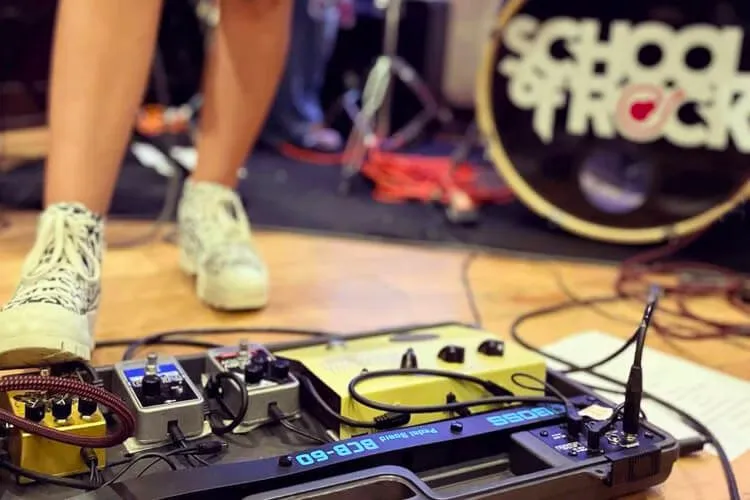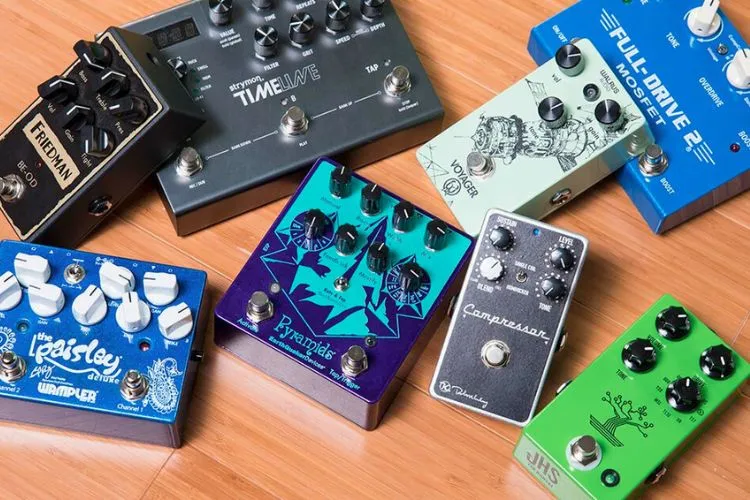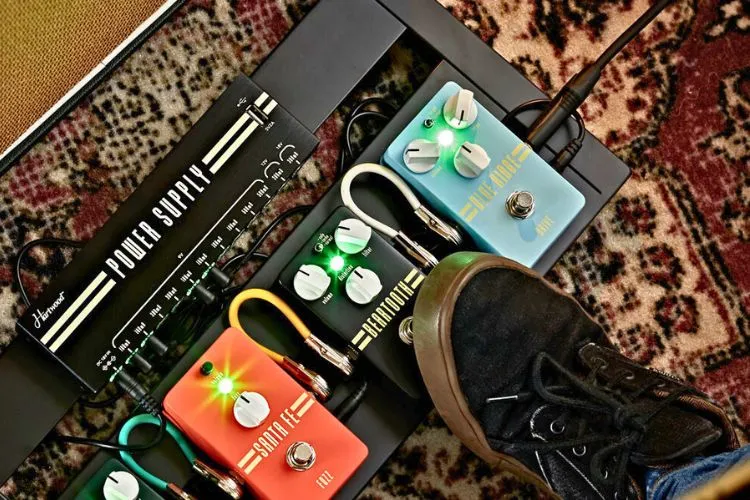Guitar pedals, small yet powerful devices, shape the sound of a guitar in many ways. From subtle reverb to aggressive distortion, these pedals play a crucial role in music production.
However, many musicians note the high cost of these pedals, leading to a common question: Why are guitar pedals so expensive?

Contents
🎶Why Are Guitar Pedals So Expensive?
Guitar pedals can be expensive due to several factors. High-quality components like precision-engineered circuits, rugged casings, and reliable switches add to manufacturing costs.
Research and development expenses for innovative sounds and features also contribute. Many boutique pedals, hand-built and designed by smaller companies, often have higher prices due to limited production runs and artisan craftsmanship.
Additionally, brand reputation and the demand for certain iconic or rare pedals can inflate prices. Market trends and the inclusion of advanced technology such as digital modeling or multi-effects capabilities can also lead to higher price tags.
All these factors combined with the specialized nature of musical equipment manufacturing mean that guitar pedals often represent a significant investment for musicians seeking professional-grade gear.
The heart of a guitar pedal lies in its components. High-quality capacitors, resistors, and other electronic parts ensure not just superior sound quality but also longevity.
These components can significantly affect the cost. Manufacturers who use premium parts often have higher prices, but for a good reason. These pedals deliver a richer, more reliable performance.
Analog vs. Digital
The debate between analog and digital pedals is central to understanding cost differences. Analog pedals, known for their warm, natural sound, often require more intricate circuitry and quality components.
This can drive up the price. Digital pedals, while versatile and often more affordable, replicate effects using digital processing. The choice between analog and digital affects both the sound and the cost.
Handmade and Boutique Pedals
Boutique pedals, often handmade in small batches, command higher prices. These pedals offer unique sounds and features not found in mass-produced models.

The craftsmanship involved in creating a boutique pedal, from designing the circuit to soldering components, requires a significant amount of time and skill. This personalized touch adds to the cost but also to the value and appeal of these pedals.
🎶Technological Innovation and Development
Research and Development Costs
Innovation is key in the pedal industry. Companies invest heavily in research and development (R&D) to create new effects, integrate modern technology like Bluetooth, and improve sound quality.
This R&D is costly but essential for advancement. The price of a pedal often reflects these investments, ensuring the company can continue to innovate.

Patents and Licensing
Intellectual property, such as patents on specific circuit designs or effects, adds another layer of cost. Licensing fees or the expense of defending a patent can increase the price of a pedal.
These legal protections ensure that inventors and companies can safeguard their innovations but also add to the overall cost.
🎶Market Dynamics
Supply and Demand
The law of supply and demand also plays a role in pedal pricing. Limited edition pedals or those with rare components can become highly sought after, pushing prices up. Collectors and enthusiasts are willing to pay a premium for unique or vintage pedals, influencing market prices.
Brand Reputation and Endorsements
A brand’s reputation, built over years of producing quality pedals, can justify higher prices. Endorsements by famous musicians further elevate a brand’s status and its products’ perceived value. These factors, while not directly related to production costs, influence how much consumers are willing to pay.
🎶Additional Factors
Import Tariffs and Shipping
Global trade policies affect the cost of guitar pedals. Import tariffs and shipping fees can significantly increase the price of pedals made abroad. These additional costs are often passed on to the consumer, raising the retail price.
Retail Markups
Finally, distribution and retail markups are a standard part of the pricing structure. Retailers add a markup to cover their costs and profit, which means the price you pay includes these additional charges.
🎶Pro Tips for Buyers
Understanding why pedals are expensive can help you make informed decisions. Look for value in the market by comparing features and prices. Don’t overlook budget-friendly pedals, as many offer excellent quality. Always try a pedal before buying if possible, or look for retailers with generous return policies.
You may also find useful: How Much Does It Cost To Restring A Guitar?
🎶frequently asked question (FAQs)
The complexity of design, quality components, and brand value can make some pedals very expensive. These pedals offer unique sounds and features that justify their cost for many musicians.
The value of a pedal is subjective. For some, the unique tone or features of an expensive pedal are worth the cost. It’s essential to consider your needs and budget when evaluating a pedal’s value.
Evaluate a pedal’s price by comparing its features, build quality, and performance with similar pedals in the market. Reviews and user feedback can also provide insights into a pedal’s value.
Many budget pedals offer remarkable sound quality. The key is to test pedals yourself, as a cheaper pedal might meet your needs just as well as a more expensive one.
Sales, second-hand markets, and clearance deals can provide opportunities to save money on guitar pedals. Keep an eye out for these deals, especially during holiday sales or store clearance events.
Conclusion:
The high cost of guitar pedals stems from a combination of factors, including the quality of components, the type of technology used, market dynamics, and additional costs like tariffs and markups.
By understanding these elements, musicians can better navigate the pedal market, finding the right balance between cost and quality.
